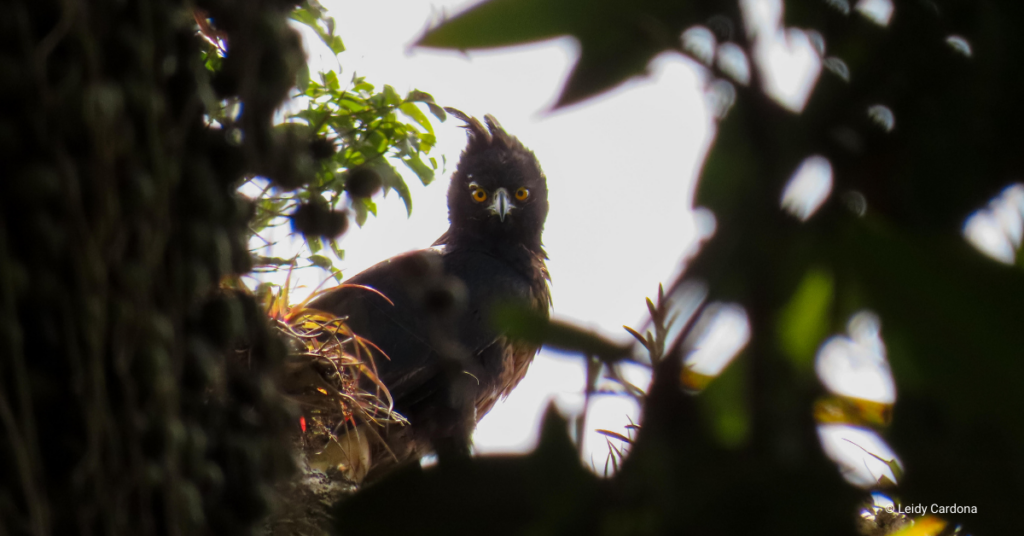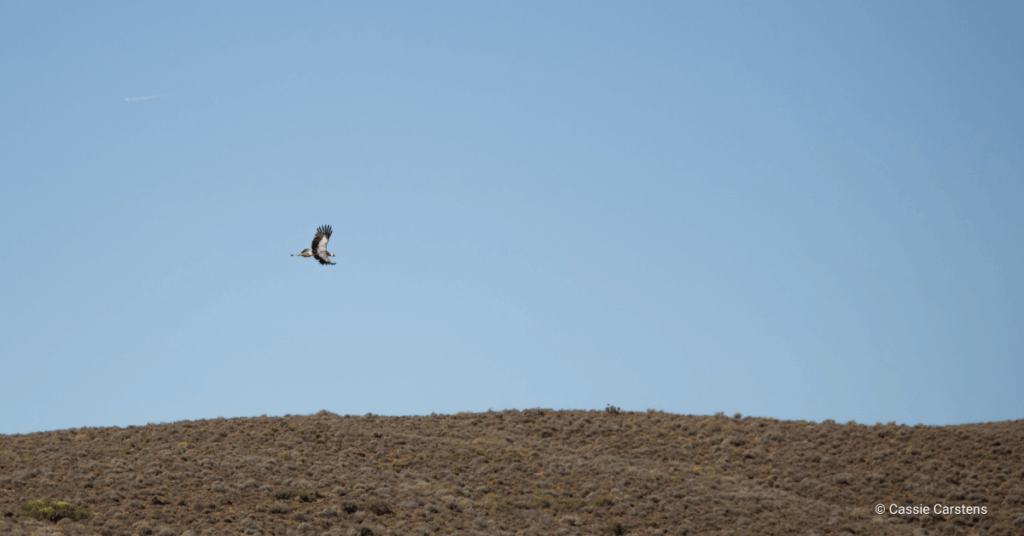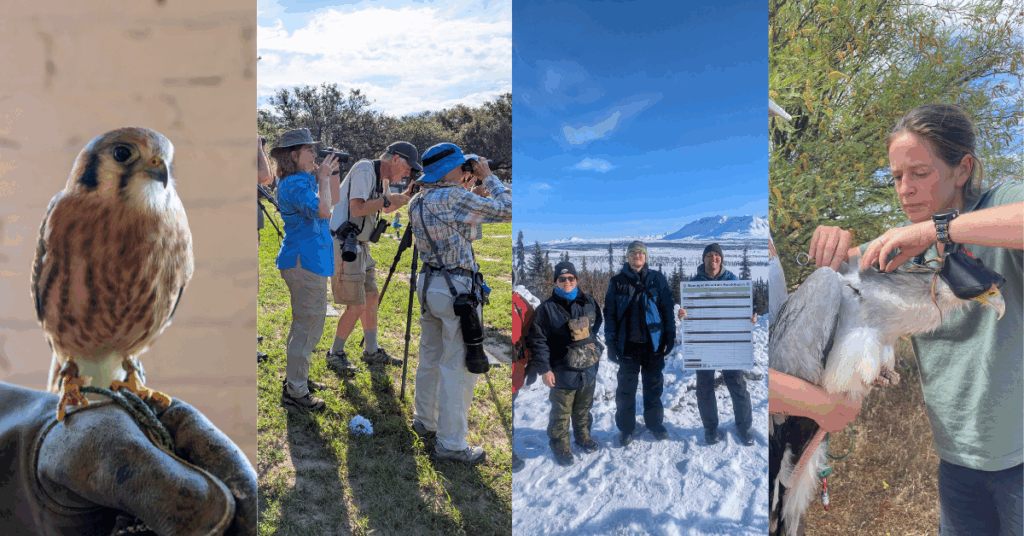We recently announced the winners of our 2022 Global Raptor Research and Conservation Grant and were able to award 4 scientists with funding for their projects. But what are our 2021 recipients up to? Keep reading to hear what Himani, Veronica, and Ana have accomplished as they reach the midpoint of their project period…
Himani Khati: Conservation of Red-headed Vultures in Uttarakhand, India
Himani started September celebrating International Vulture Awareness Day 2021. She participated in the “Vulture Conservation Issues in Uttarakhand” workshop organized by the Himalayan Institute for Sustainable Environment & Research Society and hosted by Doon University, Uttarakhand. The workshop brought together current masters and Ph.D. students and experts conserving vulture species in Uttarakhand. Himani presented on the status of Red-headed Vultures (RHV) and current issues related to their conservation.
Since Himani last checked in with us, she and her team conducted regular field surveys in both the lowland and highland regions of the study area twice a month to understand the ecological and anthropogenic parameters affecting the RHV population. The Terai Arc Landscape (TAL) is one major biodiversity-rich habitat in the area that has proven to be a promising landscape for raptor species due to its sub-tropical climate, tall trees for roosting, and ample food availability. Himani’s team planned a week-long field survey in the forests of Corbett National Park at Ramnagar region of Uttarakhand. They found direct and indirect evidence of the presence of RHV in this region, including the sighting of an RHV in flight just beyond the settlements of VanGujjar (a community living in the forest). Himani also conducted a semi-structured questionnaire survey on RHV with the forest-dweller community which helped to locate more roosting sites of Himalayan Vulture, White-rumped Vulture, and Egyptian Vulture.
Due to the prevailing third COVID-19 wave in the country, further fieldwork is currently at a halt. Himani reports that it has become difficult to conduct socio-ecological surveys in the vulture habitat due to the fear of spreading the virus. We admire Himani’s dedication to her work and are hopeful that she and her team will stay healthy and be able to pick back up their work in the coming weeks.
Veronica Dandzo: Population Assessment and Conservation of the Critically Endangered Ruppell’s Vulture in Mole National Park and Fringe Communities, Ghana.
In the past 8 months, Veronica carried out a field survey, administered a questionnaire, and led vulture conservation awareness campaigns throughout Ghana. During her one-week field survey conducted in May 2021 in Mole National Park, Veronica saw four vulture species, including three critically endangered species (Hooded, White-backed and White-headed vultures). Unfortunately, she did not document any Ruppell’s vultures in the region. She did, however, record a total of 89 individuals of four vulture species–55% hooded vultures, 37% White-backed vultures, 5% White-headed vultures, and 3% Palmnut vultures.
Due to the vast area of the Mole National Park, sighting the Ruppell’s vulture has been a challenge. Thus, the current population of the Ruppell’s vulture, its breeding and feeding areas in Mole National Park have not been determined yet. Veronica is collaborating with the management of the park to complement her survey data with incidental encounters of the species by patrol teams and bird guides. To better her chances of spotting and estimating the population of the species, the project team will modify the survey methodology to use a combination of both transect and camera trap techniques at carcass points and dam areas.
The team then administered semi-structured questionnaires to assess local people’s knowledge of Rupppell’s vulture. The survey team showed 120 respondents from four fringe communities (Mognori, Murugu, Kananto, and Larabanga) of the Mole National Park pictures of the Ruppell’s vulture and other vulture species known to occur in the area. Thirty-eight of the survey respondents confirmed sighting a Ruppell’s in the area. The team seized the opportunity to educate respondents about the plight of vultures and the environmental importance of vultures. Veronica organized a vulture conservation awareness campaign using tailored PowerPoint presentations and videos to raised vulture awareness for community schools. The program was attended by 60 pupils from Damango Girls Model and Yagbon Junior Highschool. During a conservation quiz session, pupils received vulture-branded t-shirts and stationary upon correctly answering questions.
Unfortunately, the team is unable to complete conservation education with all the community schools Veronica planned to engage. Ghana Education Service (GES) communicated a directive to halt external engagements with school children during school hours and on school premises. This directive is part of the GES COVID-19 prevention protocols. The team looks forward to completing ecological surveys in the coming months and finishing the conservation education with community schools of the Mole National Park.
Ana María Morales Cañizares: “Monitoring the Diet of the Black-and-chestnut Eagle (Spizaetus isidori) in western Antioquia, Colombia”
Since the last update, Ana has continued collaborating with the Pajaretitos, a youth organization encouraging kids to go birding. Recently, Ana has provided hands-on field experience for the group by taking them on two field trips to the conflict area. On the first trip, the kids conducted interviews with the people of the local community. On the second trip, they offered public education programs on where the Black-and-chestnut Eagle lives and what they eat. Ana and the Pajaretitos are scheduled to take more trips in the next month and a half to finish their educational goals and to begin looking for the Black-and-chestnut Eagle nests in that area.
Ana is also seeking to install trail cams in a nest. She is awaiting confirmation that the pair of Black-and-chestnut Eagles in San Agustín is using the nest again before installing a camera. If the nest is not active, there is another nest close by that has been discovered as another potential option. The juvenile left the nest last month so she is also waiting for the pair to start the reproductive cycle again to go install cams. If all works out, cameras should be installed by April at both sites.
This blog was written by Sammy Riccio, HWI’s Communication Manager. You can learn more about Sammy here.




